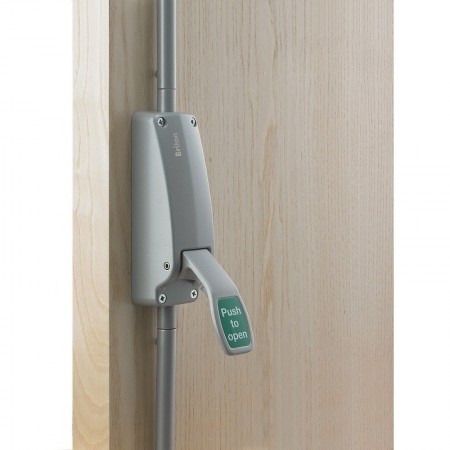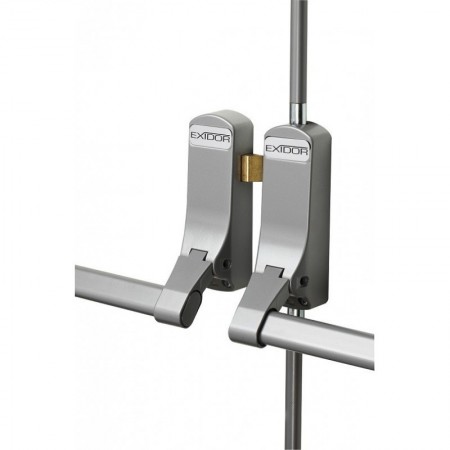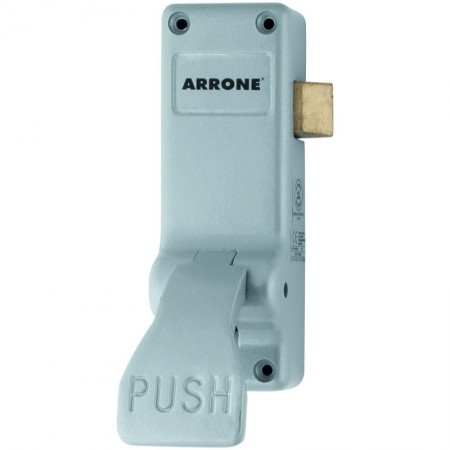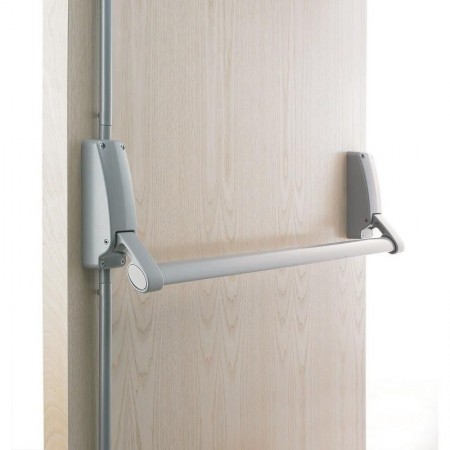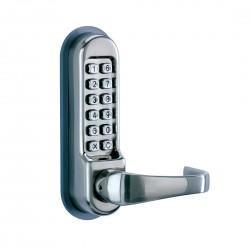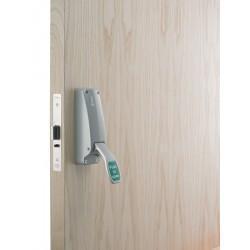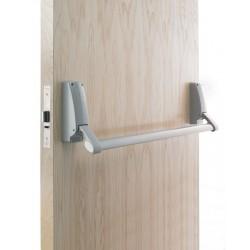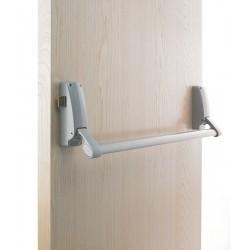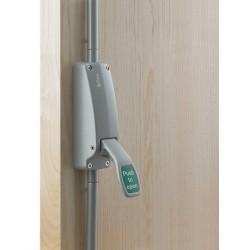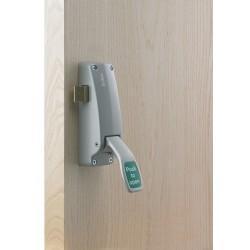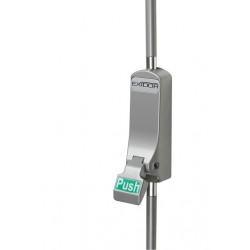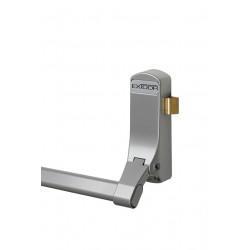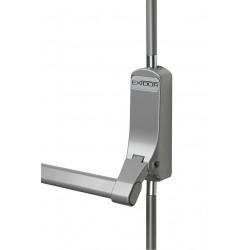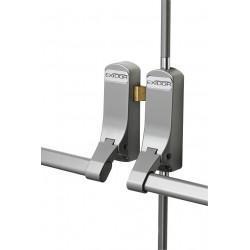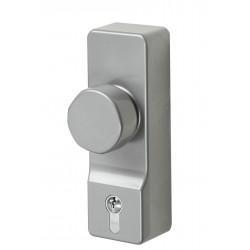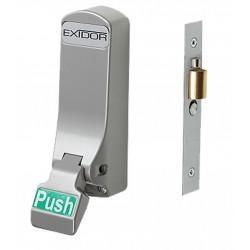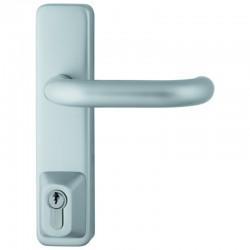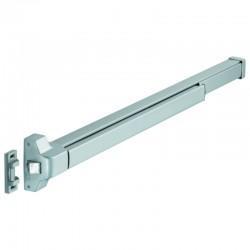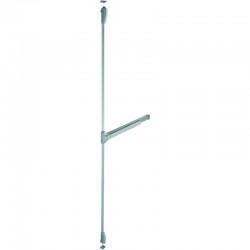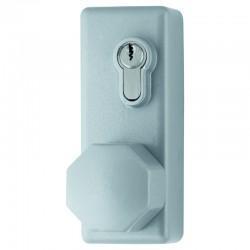Panic Door Hardware
Emergency Exit and Panic Hardware
Emergency exit and panic hardware are essential for ensuring a quick, safe escape in the event of an emergency or panic situation. Designed to meet fire and safety regulations, these products provide reliable exit solutions for commercial and public buildings.
If you need to secure a fire door with a push bar or deliver single action egress for doors with high foot traffic, the right exit devices help maintain both safety and compliance.
Fire Door Push Bars and Panic Hardware for Every Application
From fire exit push bars to push pads and panic bolts, choosing the right hardware depends on the building’s layout, door configuration, and user needs. Touch bars and push bars are ideal for high-traffic areas where quick egress is required, while push pads and lever handles offer a streamlined alternative for trained personnel.
Key Features and Benefits:
- Fast and Effortless Exit – Push bars and pads allow for rapid escape and a safe exit in emergency situations, preventing delays and congestion at exit doors.
- Certified for Compliance – Our stocked range includes products that meet a range of EU/UK standards, ensuring they are fit for use in fire escape routes and on fire doors.
- Single and Double Door Solutions – Options suitable for rebated double doors and non-rebated pairs, plus single doors. Some variants include vertical bolts for additional locking points.
- Secure External Access – Compatible external access devices allow controlled entry from outside without compromising emergency exit functions.
Our stocked brands - Exidor, ARRONE, and Briton - have products for metal, uPVC, and timber doors, single and double doors, options for external entry, plus a range of special order finishes and accessories. Contact us today if you need something for a wider or taller door than standard, or a special finish to match ironmongery on a particular site or project.
Choosing the Right Panic Hardware for Doors on Escape Routes
The choice between a fire door push bar and a push pad fire exit mechanism depends on building occupancy and usage.
- Push Bars (EN 1125) – Suitable for public buildings and high-traffic areas where users may be unfamiliar with the exit mechanism. These span the width of the door, enabling an easy single action function. Ensure Push Bar to Open signs are installed on each leaf. Check the hardware is compatible with the height and width of the door. For use in areas accessible by the public but if any doubt, always fit hardware to this standard.
- Push Pads (EN 179) – Emergency exit devices are designed for environments where staff are trained in emergency exit procedures and use of the hardware. This includes staff-only areas, offices, and flats. If the occupancy is over 60 people, use a push or touch bar instead.
- Outside Access Devices (OADs) - A surface mounted external entry device - lever or knob operated, controlled by a cylinder or digital code lock like the Briton 9260 OAD. Check the fixing length suits the door thickness. Some brands can supply longer fixing packs for doors over 45mm.
Fire Door Panic Hardware for Every Configuration
Panic hardware must be carefully matched to the door type and building requirements. Options include:
- Fire exit door push bars - for quick and easy escape routes used by the public or where occupancy is over 60 people. Ensure the fire resistance of the hardware matches the fire resistance of the door e.g. 30 minute, 60 minute, 120 minutes.
- Vertical and horizontal locking options – Choose between single-point latches or multi-point panic bolts for enhanced security on fire exit doors.
- Mortice panic nightlatches – Provide secure locking while allowing emergency egress, paired with a cylinder lock barrel for controlled external entry.
- Panic hardware for double doors - ensuring both leaves function smoothly and allow for one-action exit. Choose components or kits to suit rebated or non-rebated doors. Pairs of doors can have panic bars on both leaves for an EN 1125 solution like the Exidor 285 double door set or touch bars like the ARRONE AR8808 panic bolt set.
- Fire door push pad solutions - for controlled environments where panic is unlikely but single action egress is required by trained personnel. The EN 179 exit door options include single point latching push pads and multipoint locking vertical shoot bolts.
Ensure Safety and Compliance with Certified Hardware
All panic exit devices and emergency exit door hardware in this collection meet the required British and European safety standards. These include:
- BS EN 1125 – Panic bar fire door or non-fire door hardware is for doors used by the public, where rapid exit is essential.
- BS EN 179 – For doors used by trained personnel in sub-60 occupancy spaces.
- Certifire Approved – Ensures compliance with UK fire safety regulations.
- CE Marked/UKCA Marked - Certified to the applicable standard for the type of hardware e.g. EN 179/EN1125
- EN 1634-1 - Fire testing for products used on fire rated doors.
- EN 13637 - Allows for electronically controlled exit on final exit doors and doors on controlled escape routes.
Reliable Escape Door Solutions for Safe and Compliant Exits
Ensure your building meets fire safety and escape requirements with reliable, compliant emergency exit and panic door hardware. Browse our full range of fire exit push bars, push pads, and outside access devices, and find the right solution for your project. Order now for fast delivery with expert support.
If you want to know more, head over to our blog where we explain escape door and panic hardware, including more advice on how to choose the right product for your facility. You can also take a deep dive into the types of panic hardware and terminology.

